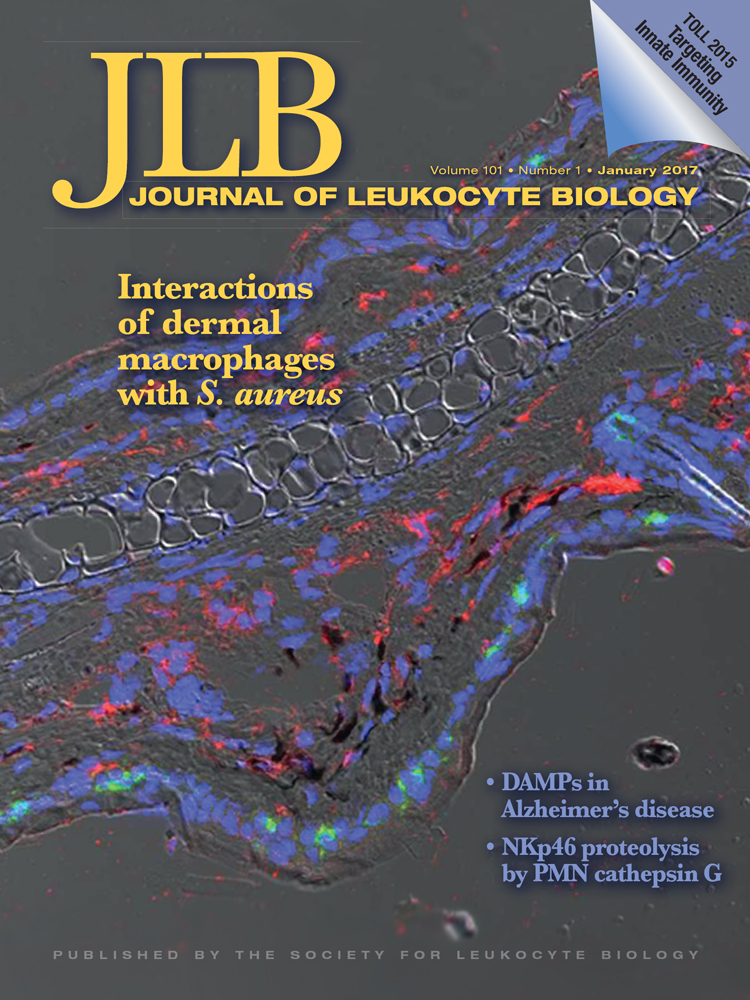Ciudad, M.T., Sorvillo, N., van Alphen, F.P., Catalán, D., Meijer, A.B., Voorberg, J. and Jaraquemada, D. (2017), Analysis of the HLA-DR peptidome from human dendritic cells reveals high affinity repertoires and nonconventional pathways of peptide generation. Journal of Leukocyte Biology, 101: 15-27.
https://doi.org/10.1189/jlb.6HI0216-069R

Abstract
Dendritic cells (DCs) are the major professional APCs of the immune system; however, their MHC-II–associated peptide repertoires have been hard to analyze, mostly because of their scarce presence in blood and tissues. In vitro matured human monocyte-derived DCs (MoDCs) are widely used as professional APCs in experimental systems. In this work, we have applied mass spectrometry to identify the HLA-DR–associated self-peptide repertoires from small numbers of mature MoDCs (∼5 × 106 cells), derived from 7 different donors. Repertoires of 9 different HLA-DR alleles were defined from analysis of 1319 peptides, showing the expected characteristics of MHC-II–associated peptides. Most peptides identified were predicted high binders for their respective allele, formed nested sets, and belonged to endo-lysosomal pathway-degraded proteins. Approximately 20% of the peptides were derived from cytosolic and nuclear proteins, a recurrent finding in HLA-DR peptide repertoires. Of interest, most of these peptides corresponded to single sequences, did not form nested sets, and were located at the C terminus of the parental protein, which suggested alternative processing. Analysis of cleavage patterns for terminal peptides predominantly showed aspartic acid before the cleavage site of both C- and N-terminal peptides and proline immediately after the cleavage site in C-terminal peptides. Proline was also frequent next to the cut sites of internal peptides. These data provide new insights into the Ag processing capabilities of DCs. The relevance of these processing pathways and their contribution to response to infection, tolerance induction, or autoimmunity deserve further analysis.
Article Information
Ciudad, M.T., Sorvillo, N., van Alphen, F.P., Catalán, D., Meijer, A.B., Voorberg, J. and Jaraquemada, D. (2017), Analysis of the HLA-DR peptidome from human dendritic cells reveals high affinity repertoires and nonconventional pathways of peptide generation. Journal of Leukocyte Biology, 101: 15-27. https://doi.org/10.1189/jlb.6HI0216-069R
https://doi.org/10.1189/jlb.6HI0216-069R
Funding. Ministerio de Economia y Competitividad – CONVOCATORIA 2015 – PROYECTOS I+D+I – PROGRAMA ESTATAL DE INVESTIGACIÓN, DESARROLLO E INNOVACIÓN ORIENTADA A LOS RETOS DE LA SOCIEDAD:
SAF2015-66399-R: “PRESENTACION DE AUTOANTIGENOS PROTEICOS Y LIPIDICOS EN LOS ISLOTES PANCREATICOS Y EN EL TIMO: UNA CLAVE PARA LA DIABETES DE TIPO 1”
